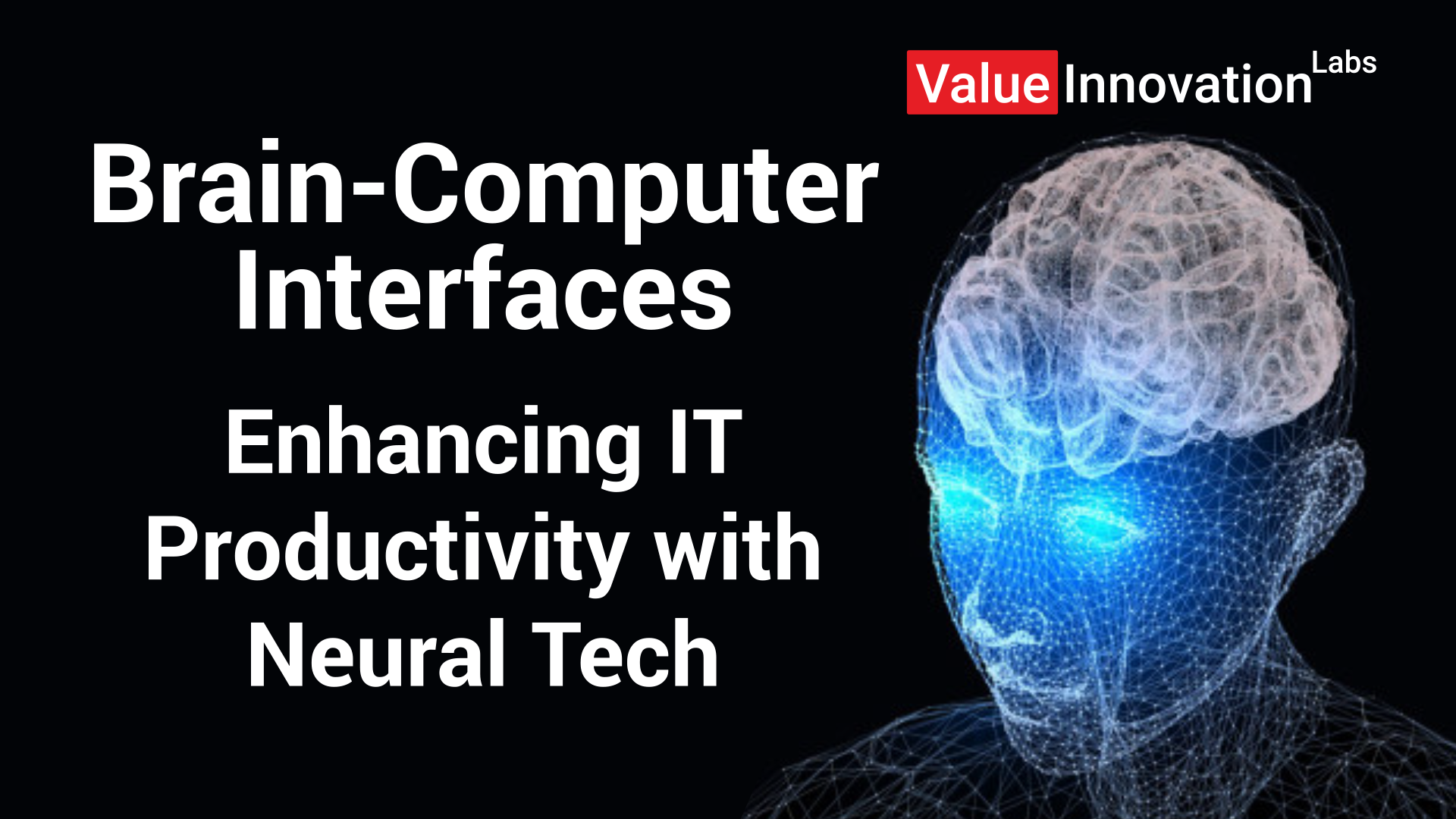
Brain-Computer Interfaces: Enhancing IT Productivity with Neural Tech
- by Indu Sharma
In an era where technology and human capability are merging like never before, Brain-Computer Interfaces (BCIs) are emerging as a powerful frontier in IT innovation. Once confined to science fiction, BCIs are now finding practical applications in enhancing workplace efficiency, communication, and even creativity. As we move toward 2025, BCI augmentation is redefining how professionals interact with machines — not through keyboards or voice commands, but directly through thought. visit for more: value innovation lab
Let’s explore how this transformative technology is reshaping IT productivity and why it’s becoming a cornerstone of future digital workplaces.
What Are Brain-Computer Interfaces (BCIs)?
A Brain-Computer Interface (BCI) is a direct communication pathway between the human brain and an external device, typically a computer or machine. Using neural signals, BCIs interpret brain activity and convert it into actionable commands — allowing users to control systems without physical movement.
In simpler terms, BCIs allow people to “think” their commands into action. From cursor movement to typing and device control, the potential is limitless. In IT and enterprise environments, this means faster workflows, reduced cognitive friction, and unprecedented levels of productivity.
How BCIs Are Redefining IT Productivity
-
From Manual Input to Thought Execution
Traditional computing relies on tools like keyboards, mice, or touchscreens. BCIs eliminate these intermediaries. Developers, engineers, or analysts could, for instance, visualize a command or line of code, and the system would process it directly.
Imagine debugging software or configuring networks simply by focusing on the task mentally — BCI augmentation could make such scenarios routine. This reduces repetitive strain, speeds up execution, and creates a smoother human-technology interface.
-
Real-Time Problem Solving Through Neural Insight
BCIs collect vast amounts of neural data that reflect focus, stress, and fatigue levels. This can be used in adaptive IT systems that adjust based on the user’s mental state.
For example, if a system detects cognitive overload, it could automatically simplify visual interfaces or delay non-urgent notifications — supporting continuous focus. In cybersecurity or network management, this level of responsiveness could prevent critical errors caused by human fatigue.
-
Enhancing Collaboration in Hybrid Work Environments
Remote work has made digital collaboration essential. BCIs can enable telepathic-like teamwork — where shared focus and emotion tracking improve virtual collaboration. By detecting emotional cues, systems can gauge whether teams are aligned, engaged, or struggling, helping leaders intervene intelligently.
In hybrid IT operations, where real-time coordination is vital, BCI-based systems could revolutionize decision-making, allowing teams to operate almost instinctively.
-
BCI-Driven Automation and AI Integration
When paired with Artificial Intelligence, BCIs evolve into intelligent neural ecosystems. AI can interpret and predict a user’s intention based on neural activity patterns. This creates opportunities for predictive automation — where systems act before commands are even given.
For example, in cloud management or cybersecurity response, BCIs integrated with AI could predict operator intent and execute predefined protocols instantly, saving precious seconds in critical situations.
-
Inclusivity and Accessibility in IT Workplaces
Perhaps one of the most profound benefits of BCIs is how they expand accessibility. For individuals with limited mobility or disabilities, BCIs provide new ways to contribute meaningfully in digital environments. Tasks like programming, design, or data analysis can be performed through neural input — democratizing access to the digital workspace.
This inclusion not only benefits individuals but also boosts overall innovation by embracing diverse talents and perspectives.
The Challenges Ahead
While BCIs promise remarkable benefits, their mainstream adoption faces several hurdles:
- Data Privacy and Security: Neural data is deeply personal. Protecting this information from misuse or unauthorized access is crucial.
- Ethical and Psychological Implications: Reading brain signals raises questions about cognitive privacy, consent, and mental health.
- Technological Maturity: Although progress is rapid, current BCIs still struggle with signal accuracy and long-term usability in non-clinical environments.
- Infrastructure Readiness: Organizations must invest in compatible systems and cybersecurity frameworks to support neural integration.
However, as research accelerates and ethical frameworks mature, the next few years are expected to see BCIs transition from experimental setups to enterprise tools.
The Future of BCI Augmentation in IT Workflows
The future of IT productivity is not just about faster processors or smarter algorithms — it’s about merging human creativity with computational precision. BCI augmentation is paving the way for workplaces that operate at the speed of thought.
By 2030, we could see IT professionals managing cloud infrastructure, resolving code conflicts, or performing cybersecurity assessments using neural-assisted computing. Combined with quantum processing, AI, and IoT, BCIs will be part of a neuro-digital ecosystem that continuously learns from human intent and adapts dynamically.
As Value Innovation Labs continues to explore emerging technologies, Brain-Computer Interfaces represent one of the most exciting frontiers — where intelligence is no longer confined to devices, but becomes an extension of the human mind itself.
Key Takeaways
Brain-Computer Interfaces (BCIs) connect human brains directly with computers, eliminating traditional input methods.
BCI augmentation enhances focus, communication, and productivity in IT environments.
Integration with AI and adaptive systems enables predictive automation and stress-aware operations.
Ethical, privacy, and usability concerns must be addressed for sustainable adoption.
FAQs
Q1. What are the practical uses of Brain-Computer Interfaces in IT?
BCIs can accelerate workflows by enabling thought-based command execution, enhance cybersecurity monitoring, support remote collaboration, and improve accessibility for differently-abled employees.
Q2. How does BCI augmentation differ from traditional automation?
Unlike traditional automation, which follows pre-coded rules, BCI augmentation adapts in real time to a user’s mental intent and emotional state, allowing systems to anticipate actions and enhance efficiency dynamically.
Q3. Are BCIs safe and ready for enterprise use?
BCIs are still in the developmental stage, but non-invasive models are gaining traction. With robust data protection and ethical governance, BCIs could become a safe and scalable solution in enterprise IT by the late 2020s
visit for more: value innovation lab
In an era where technology and human capability are merging like never before, Brain-Computer Interfaces (BCIs) are emerging as a powerful…
